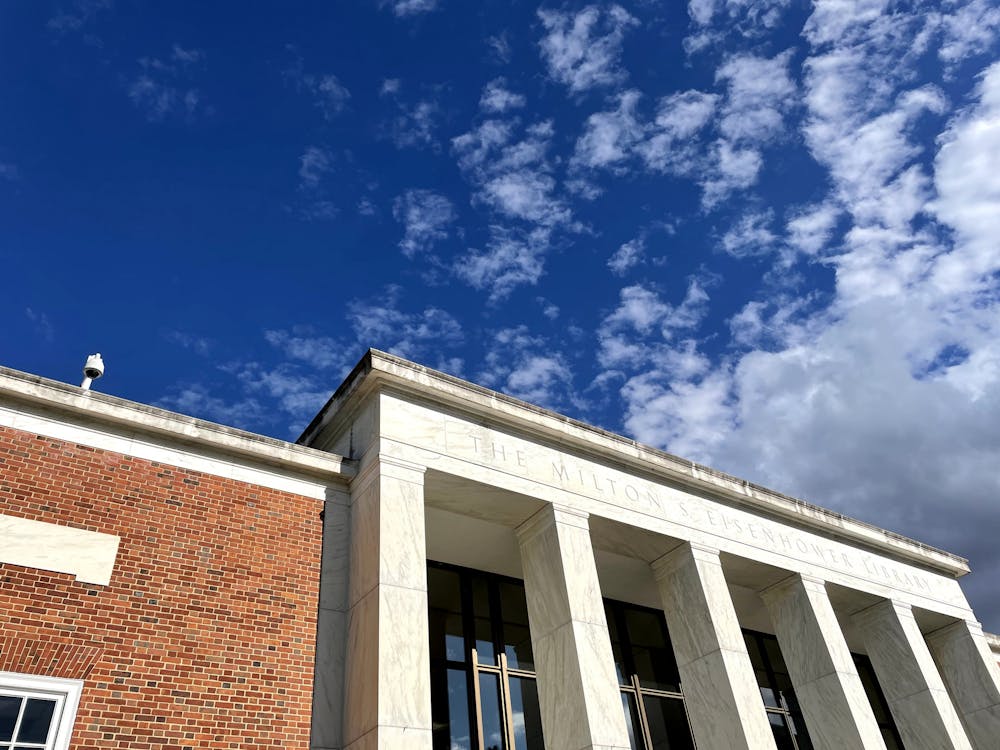With the resumption of on-campus living, students are adjusting to studying in study spaces at Homewood after having spent much of the past year online.
Last semester, students were allowed to return to campus, but study spaces in Brody Learning Commons and Milton S. Eisenhower Library (MSE) were limited by density restrictions and shortened hours of operations. In November 2020, the University announced that it would build the Freshman Annex to serve as a socially distanced study space in the Freshman Quad, but students reported that it was largely unused.
Now, with an increased student body presence on campus for this semester, Homewood Campus study facilities like Brody, MSE, Gilman Hall and dorm building common rooms have significantly reduced restrictions.
According to sophomore Luis Rubio in an interview with The News-Letter, the outdoor study spaces are ideal.
“If there’s an opportunity for me to [study outdoors], I definitely try to take advantage of it,” Rubio said.
Nonetheless, he noted that most of the time he can be found in Brody or MSE. He noted that those places feel more academic to him, making them more conducive to learning.
Freshman Laylah Badiru echoed Rubio’s statements.
“I feel motivated to come when I see other people here working; it makes me want to work harder,” Badiru said. “Having access to a lot of tables, areas to work at quickly and outlets everywhere are very useful.”
Freshman Rachel Tepas noted that the only issue with the study spaces is that they are so packed it is often hard to find a spot.
In an interview with The News-Letter about the downsides of the on-campus study spaces, freshman Cameron Fleming called for more indoor study rooms.
“I think we could use more closed-in study rooms because they’re always booked,” she said.
The University has taken its first steps in the process of renovating MSE — the building’s first major renovation since opening its doors in 1964. The redesign working committee consists of faculty, graduate students, undergraduates and library staff.
In an email to The News-Letter, Vice Dean for Humanities and Social Sciences Chris Cannon, co-chair of the working committee, elucidated the goal of the group.
“Our task is to work out what users of the library really want,” Cannon wrote. “The design team has a staff devoted to that question, but we see ourselves as much more of a grassroots organization, made up of library users and committed to hearing as wide a variety of views from all the library’s other users as is possible.”
On August 10, the planning committee sent out its first survey to students and faculty. The survey addressed what resources students found most important and what changes they would like to see in the MSE. The survey also asked general questions on the amount of time spent in the library and the frequency of group study sessions. Responses to the survey were robust, with over 1,500 replies.
On Sept. 17 and Sept. 21, the planning committee hosted their first virtual town halls, with participants ranging from faculty to students to librarians. The team met to discuss the results of the survey and share ideas on design plans.
The survey results showed that individual study research was the most used service at the library for both undergraduates and graduate students. It defined differences in the time spent in the library amongst University students and employees, noting that undergraduates spend the most hours there, followed by graduate students and then faculty. Faculty and graduate students appeared to value increasing the number of books, while undergraduates did not see it as a priority.
Undergraduates, graduates and faculty all noted that natural lighting, aesthetics and availability of individual study spaces were the most important features to consider in the new library. The committee also discussed new additions like cubicles with lockers for books, discipline-specific areas and places to host visiting scholars.
Despite the new insights gained in the survey, Cannon emphasized the need for more student input in the planning process.
“While undergraduates were very generous with their time and a significant number of them answered the survey, all members of the working committee would very much value the opportunity to hear from undergraduates about what they need in a library,” he wrote.





